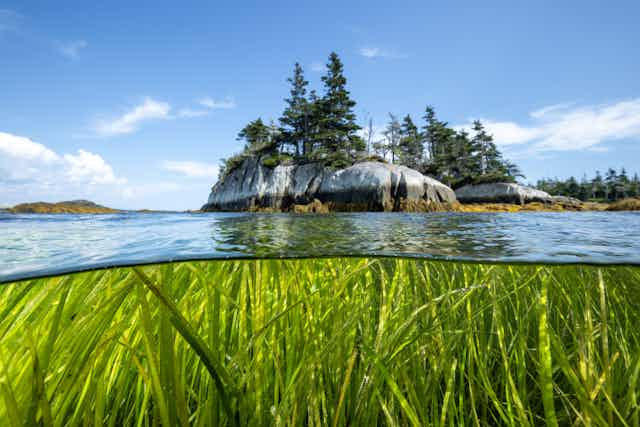The impacts of climate change are becoming increasingly pervasive, bringing Canada’s lack of preparedness in its marine conservation measures into focus.
The North Atlantic right whales — one of the most endangered large whales found off the eastern shores of Canada — are now changing their habits and traditions.
Their pursuit of their favourite food source — small and nutritious crustaceans — has taken them further north from the Bay of Fundy to new feeding grounds in the waters of the Gulf of St. Lawrence in recent years. This migration effectively renders the existing conservation area in the Bay of Fundy to protect the highly threatened population useless.
To address these increasingly pervasive, climate-driven changes, we, a collaboration between conservation research and marine governance professionals from across Canada, developed five actionable solutions for Canada’s marine conservation under climate change, with a modernized Oceans Act at its core.
Species are on the move
The shift in the feeding grounds of these whales seems to be closely linked to warmer ocean temperatures, brought about by ongoing and intensifying climate change.

With greenhouse gas emissions on a rise, our oceans absorb more heat, ultimately leading to higher surface temperatures in the key habitats of many iconic marine species, such as the North Atlantic right whale. The amount of crustaceans available for North Atlantic right whales to feed on seems to decline with higher temperatures.
Species are on the move faster than ever today, as they explore new ecosystems and create new ecological communities to stay within their preferred environment.
Read more: Species on the move: 4 ways conservation can adapt in an era of climate change
While Canada has a marine conservation framework in place to protect marine biodiversity in its waters, this protection is firmly static in space and not ideally suited for our highly dynamic oceans in times of a climate emergency.
The unpredictable nature of our changing oceans poses a problem for how we currently approach marine conservation under the Oceans Act and other conservation frameworks in Canada such as the Species at Risk Act and Fisheries Act.
Canada’s marine protected areas
Today, 14 marine protected areas (MPAs) cover about six per cent of Canada’s marine and coastal areas under the Oceans Act. These MPAs were established to protect either unique species or their habitats.
Some iconic MPAs include the Gully MPA on the edge of the Atlantic Scotian Shelf, the Sgaan Kinghlas-Bowie Seamount MPA west of Haida Gwaii in the Pacific Ocean and the recently established Tuvaijuittuq MPA in the High Arctic.
Much like the North Atlantic right whales moving away from their historical aggregation sites, changes are beginning to appear in other Canadian waters and their protected areas.
New species like some tropical fishes are appearing more frequently, others are moving further north or into deeper waters, leaving the waters where they were protected.
Modernizing the Oceans Act
Now is the time to acknowledge and address the rapid shifts in Canada’s oceans. To meet this challenge, Canada’s marine conservation toolbox — starting with the Oceans Act — needs an overhaul.
The Oceans Act dates back to 1996 and while it has been amended several times since, it does not mention climate change once.
Our recent research suggests amending the Oceans Act to explicitly consider climate change impacts on marine ecosystems and species in ocean management and consider applicable actions. If we want to move forward with meaningful marine conservation in Canada, our central tool for marine conservation needs to address the urgent issue of global climate change.
Not only does the Oceans Act fail to address the impacts of ongoing climate change, research also found Canada is lagging far behind other comparable nations in terms of integrating climate change in the management of its marine protected areas.
Adapting marine conservation to climate change boils down to changing legislation and embracing new technologies such as sensor-equipped robotic submarines and airborne drones. New technologies can bolster the existing marine conservation toolbox to address the impacts of climate change.
This was shown, for example, in the recent development of dynamic protection measures that used these technologies to track and observe North Atlantic right whales in Atlantic Canadian waters in real time.
We suggest combining these dynamic protection measures with the existing static MPA network in Canada’s oceans to allow for climate change-induced species shifts.
Taking leadership in ocean conservation
Canada is emerging as a global leader in ocean conservation, committed to protecting 30 per cent of Canada’s ocean by 2030.
It is also committed to modernizing the Oceans Act “to explicitly consider climate change impacts on marine ecosystems […],” as stated in the 2021 mandate letter for the minister of fisheries, oceans and the Canadian Coast Guard.
While these national and international commitments are a sign of progress towards climate-adaptive marine conservation, Canada needs to step up to the plate to safeguard its oceans from a changing climate. It needs to overhaul its marine conservation toolbox.

